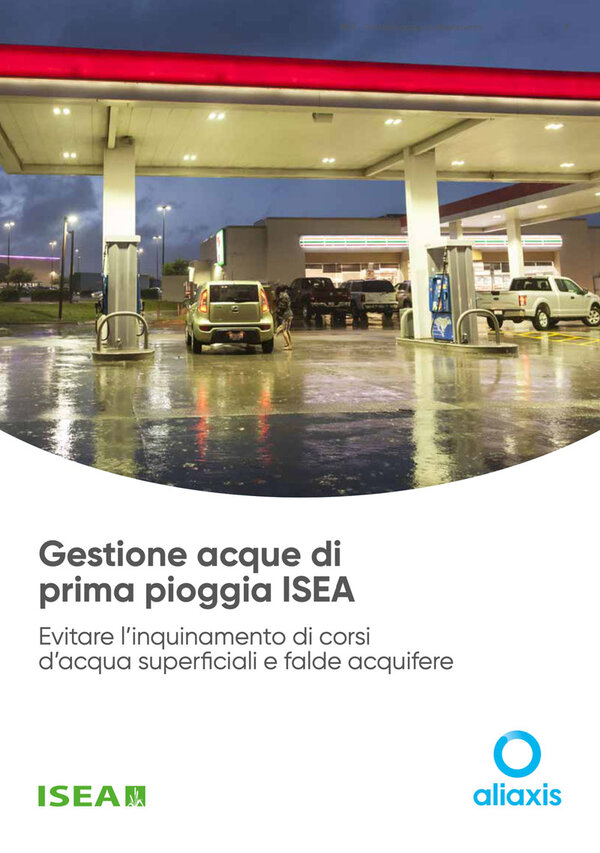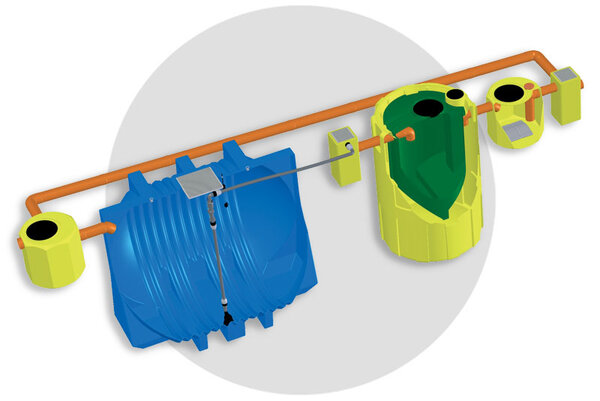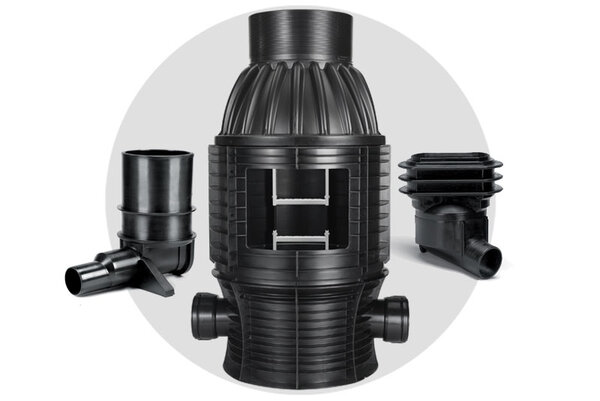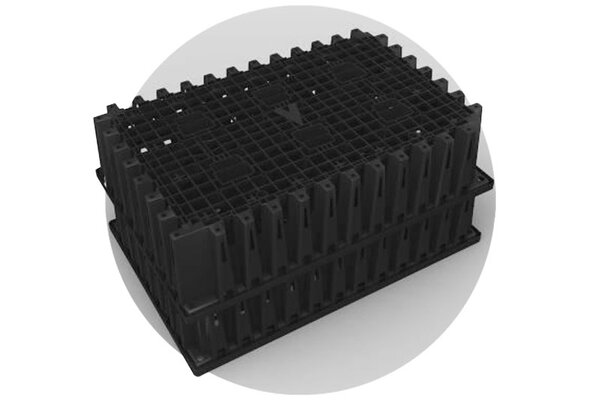Avoid the pollution of watercourses and land with the correct treatment of runoff water during the design and installation phases.


First rain or runoff water corresponds to the first 5 mm of rain that falls on car parks or squares, in particular of activities such as refueling areas, car washes, logistics centres, industries, car parks etc...
As the runoff waters flow, they carry with them the polluting elements that have deposited on the asphalt, such as sand, oil, grease, hydrocarbons, or other materials related to the activity that takes place on the square. Water laden with polluting elements cannot be released directly into the ground or into a stream, but must be intercepted and treated according to Legislative Decree 3 April 2006 n. 152. The "Consolidated text on waters" containing "Environmental regulations", has introduced very precise criteria in Italy in the field of responsibilities and methods for treating storm water. Already in the preliminary design phase it is appropriate to provide a water treatment plant that is compliant with the regulations, and guarantees the prevention of soil and water pollution.
REDI is able to offer solutions for the management of waste water and accompanies the designer in choosing the best solution for his job. The legislation is quite complex and can vary according to the region, in a more restrictive sense.
THE SOLUTIONS OF ALIAXIS
Treatment plants with accumulation and continuously
The choice of which type of implant is most suitable is influenced by several factors:
- The type of pollutants present in the wastewater to be treated
- The concentration of pollutants
- The national and local legislation
- The final delivery
When is a first rain water treatment plant necessary?
Whenever polluting elements are deposited on the apron, some examples: car parkings, logistics centres, petrol stations, car washes, industrial activities, airports, etc.
CAR PARKINGS

LOGISTIC CENTRES

AIRPORTS

1. First rain system with Isea Rain accumulation
Why choose a storage treatment plant?
The system with accumulation, in addition to purification, contributes to the prevention of flooding, in the event of heavy rains or "water bombs" the accumulation tanks serve as temporary storage of rainwater reducing the overload of sewers and bodies of water receptors into which they will pour.

Rain: treatment plant and runoff water release
Rain first rainwater treatment plant, made of polyethylene, carries out the purification of run-off waste from paved surfaces guaranteeing the removal of polluting material and allowing subsequent adduction to the final delivery, in compliance with the indications of the law

APPLICATION
Treatment of rainwater from paved surfaces
USER
Uncovered surfaces up to 10,000 m2
Stages of rainwater purification
The polluted water from the yard is stored and treated to be released after a sedimentation time of 24/48 hours, in accordance with regional regulations. The purification is divided into 3 phases:
- Accumulation
- Diseoiling
- Filtration
Second rain
The secondary rainwater is sent via the by-pass pipes directly to the final receiver through the spillway well.
Flooding prevention
Rainwater storage capacity from 3,000 to 50,000 liters of accumulation.


2. First Rain continuous rain system by Isea
Continuous first rain water treatment plant in polyethylene, consisting of a spillway well, equipped with inlet, outlet and by-pass stubs, a sand trap for the sedimentation of sand and aggregates and an oil and hydrocarbon separator with coalescing filter and automatic shutter.


APPLICATION
First rain water treatment from paved surfaces.
USE
Flow rates up to 30 l/s
Uncovered surfaces up to 6,000 m2
Stages of rainwater purification
The polluted water enters the spillway which allows the division between first rain and secondary water. The sand trap allows the sedimentation of inert material such as sand, gravel, subsequently the oils and hydrocarbons are captured in the coalescent filter:
- Sedimentation
- Separation of polluting elements
- Final delivery
Second rain
The secondary rainwater is sent via the by-pass pipes directly to the final receiver through the spillway well.
Pollution prevention
Operation of the first rainwater treatment plant in continuous FIRST RAIN


3. Otto-Pe deoilers and desalination plants of Isea
OTTO-PE is the mineral oil separator with coalescence filter and automatic closing device (Class I). Polyethylene oil and hydrocarbon separator, for the treatment of wastewater containing mineral oils.


APPLICATION
Treatment of run-off wastewater from outdoor areas, garages, industrial or artisanal surfaces, car parks or car washes.
USE
Flow rates up to 6 l/s
Stages of rainwater purification
The waters coming from the square Otto-Pe oil and hydrocarbon separator in monobloc polyethylene, complete with manhole covers both for inspection and for the collection of oils, floating materials, sands and aggregates. The purification takes place in the following stages:
- Sedimentation
- Separation of polluting elements
- Automatic shutter
- Hydrocarbon storage chamber
Pollution prevention
OTTO-PE mineral oil and hydrocarbon separator operation


Download


Request information
Choose the Aliaxis system that best suits your rainwater management needs



Contact our industry expert
Massimiliano Giorgio
mgiorgio@aliaxis.com

